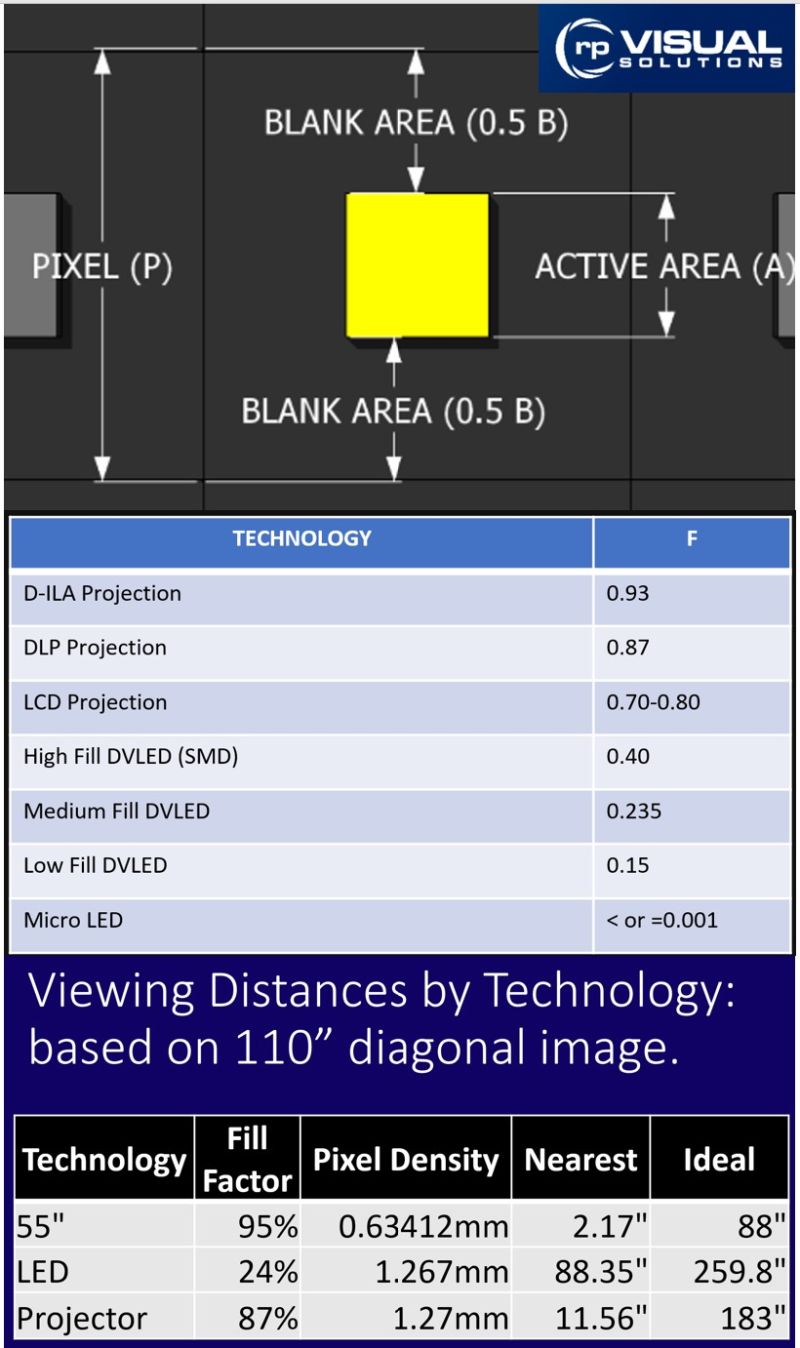Microsoft Teams Rooms and the new Front Row layouts mean a step change to seriously large displays.
Not calculating Closest Viewer distance can mean expensive disaster! What formula do you use?

As part of a series of short articles, Visual Displays' Director Greg Jeffreys discusses all things AV…
Each pixel has a FILL FACTOR (F), the % that is actually active, with massive impact on closest viewing distance.
The Nearest Viewer to an image must be no closer than where the image just starts to merge rather than being separate pixels.
dvLED screens have low Fill Factor - the active element is a tiny area within the pixel. dvLED pitch (1.2mm, 1.5mm etc) refers to the distance between these dots of light. NOT the size of the pixel. Those huge price differences for similar sizes are there for a reason!
Projection has a high Fill Factor, meaning you can get viewers close to the image - with comfort. This is essential with Front Row, where in-person viewer proximity is critical.
The graphics below are by James Fife of #RPVisuals, the smartest guy in the room in this space, a friend and colleague. If you're based in the US, get onto one of his courses without delay!
He and I use trigonometry-based calculation tools to help clients avoid expensive mistakes like these. There are surely some mistakes being made in specifying dvLED screens into hybrid and teaching spaces right now. Expensive mistakes...
My team at Visual Displays are here to guide you though the proAV display swamp!

Posted: 1st April 2022